Peonies "Coral": description and features of cultivation
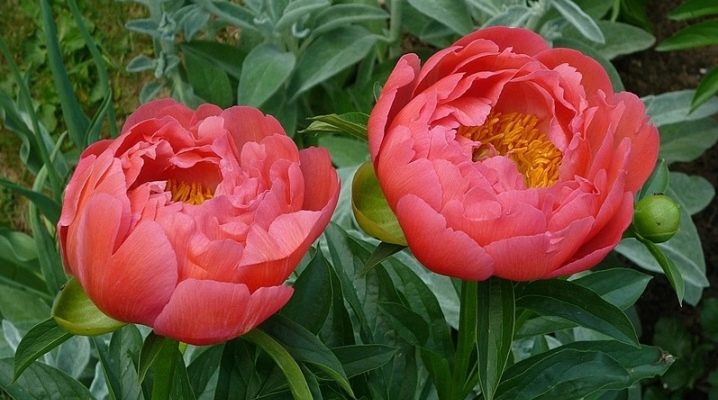
Even in Ancient Greece, beautiful compositions were created from peonies in the royal gardens. Today, these handsome men can be found not only in parks or greenhouses, but also in many personal plots. Coral peonies are especially popular.

Description
The peony is a perennial plant. All their types can be divided into several subspecies: these are herbaceous, semi-shrub and shrub peonies. However, they all have a well-developed root system and dense stems, which can be up to one meter in height.
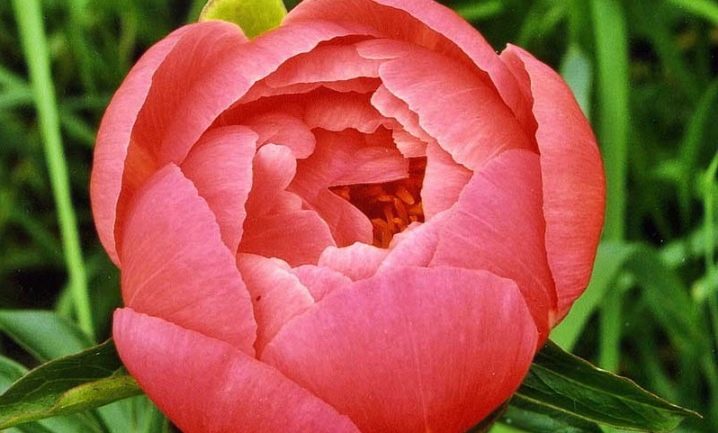
The leaves of peonies are carved and green in color, which in some varieties changes over time. In some cases, gray leaves can also be found. Flowers are most often double or semi-double and are large multi-colored buds. They reach 24 centimeters in diameter. The seeds of this plant are rather large, oblong or round in shape.
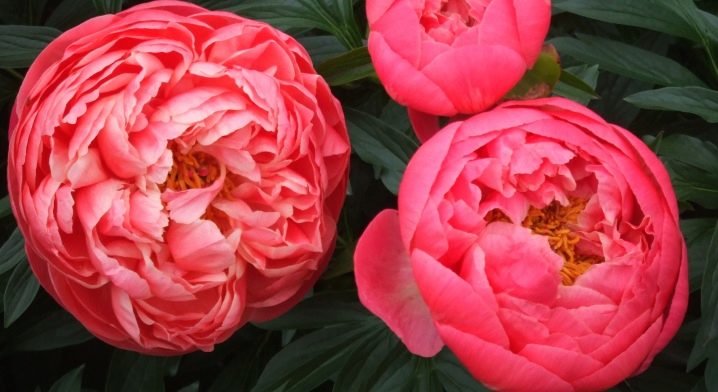
Varieties
Thanks to the successful and painstaking work of many breeders, a large number of varieties of this plant have been bred.
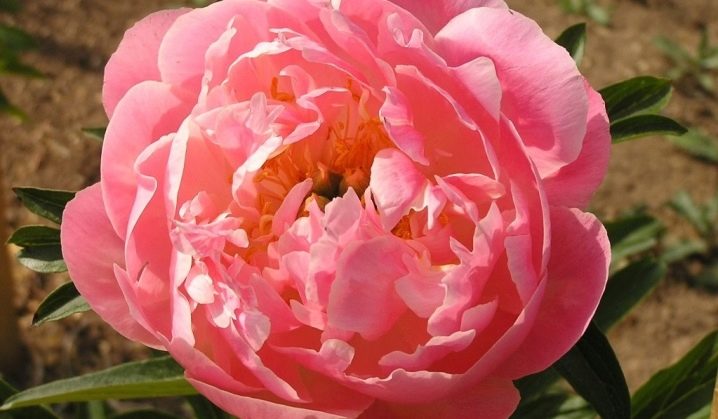
Coral Pink
This beautiful plant reaches 75 centimeters in height, has soft green carved leaves, as well as double flowers of a light pink hue. When opened, the bud reaches 13 centimeters in circumference. Flowering begins in June and lasts about 3 weeks. This variety is very popular among gardeners due to its beauty and compactness.
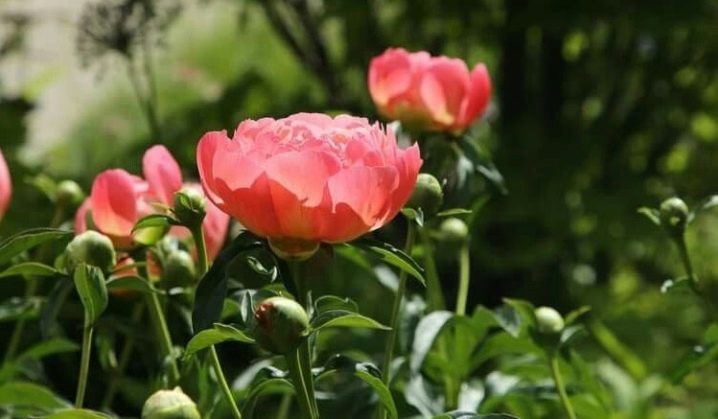
"Pink Hawaiian Coral"
This variety of peonies was bred in the 90s of the last century by American scientists. It is a perennial herb that grows up to one meter in height. Moreover, its stems are quite dense and dotted with green carved foliage. The flowers are semi-double and large, up to 21 centimeters in diameter, with an apricot shade. They are very often used for cutting.
Flowering begins early - in April, and lasts up to 3 weeks (in cool weather, it can be more).
Pink Hawaiian Coral tolerates cold weather well and does not require additional shelter during frost periods.

Coral Beach
The peony is distinguished not only by a beautiful and lush bush up to one meter in height, but also by its delicate coral color. The flower itself is small, up to 15 centimeters in diameter. Inflorescences are semi-double, with a yellow center. In its shape, the opened buds are a bit like lotus flowers. A distinctive feature of this variety of peonies is their resistance to various temperature extremes, as well as to some fungal diseases. Thanks to this, it is very popular with many summer residents.
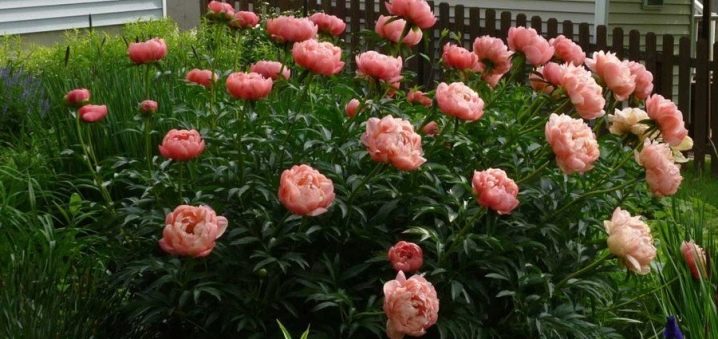
"Coral fairies"
This variety of peonies is an interspecific hybrid. Its appearance dates back to the last century. The bush is low, up to 70 centimeters, dense stems with beautiful decorative leaves. Coral semi-double buds, when opened, reach 15 centimeters in diameter and exude a delicate aroma.
Very early and long flowering. In addition, this plant is not afraid of even severe frosts and tolerates drought well.
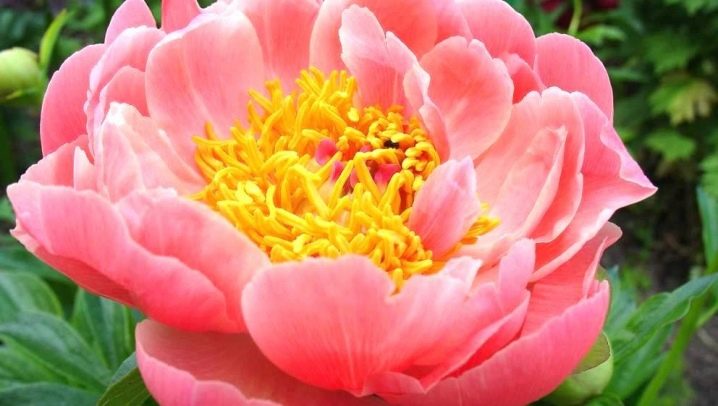
Coral Sunset
A very popular variety of peonies. It is compact, but at the same time the height of the plant reaches in some cases up to one meter. Semi-double buds are placed on tall, erect stems, which have a pink-peach color with a shade of coral red. The leaves are green. Flowering starts early.Coral Sunset has received many awards at various exhibitions, not only for its beauty, but also for its easy care and resistance to temperature extremes.

Coral Magic
This newly developed peony has amazed everyone with its colorful flowers. These are semi-double three-row buds with a very bright color, which are visible from afar. In a circle they reach 15 centimeters, in the middle there are yellow stamens. The bush is compact and low, up to 70 centimeters. Erect stems with delicate green foliage. Flowering begins in April.
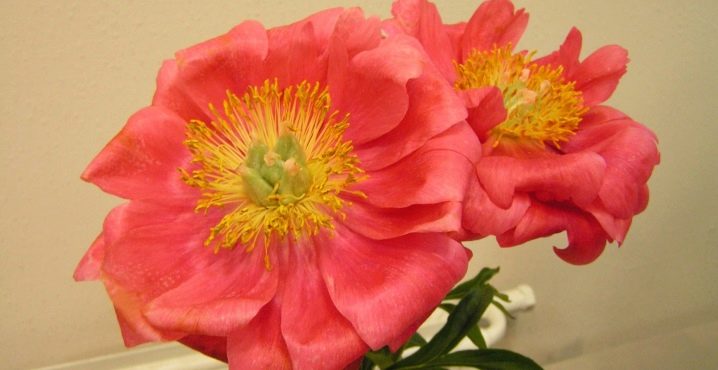
Coral Supreme
This hybrid plant is very rare. The bush has powerful stems that grow up to one meter in height. Its carved bright green leaves cover almost the entire bush, only coral-salmon buds are visible at the very top. When they open, they represent a bowl up to 19 centimeters in diameter. In addition, during flowering, they exude a very delicate aroma.
It begins in late April - early May and lasts up to two weeks.

Coral & Gold
With its unusual beauty, as well as large flowers, this variety of peony amazes everyone. Already in late March or early April, you can see terry coral buds on the tops of a huge, up to 95 centimeters high, bush. When they bloom, their diameter can be up to 21 centimeters. In addition, the flowers exude a rich, sweet scent. The stems are decorated with green carved leaves.
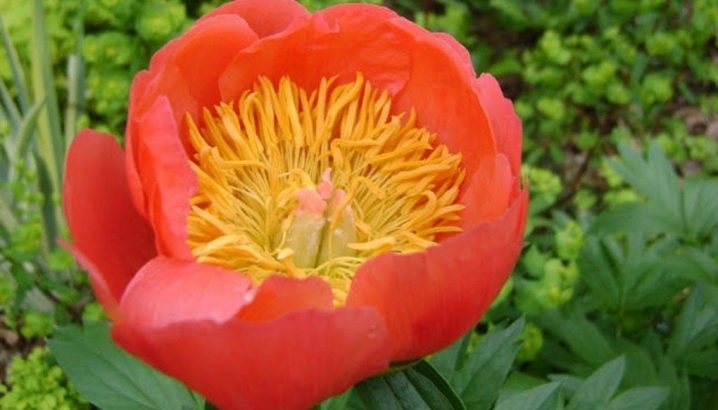
"Topeka Coral"
Peonies of this variety are distinguished by terry bomb-shaped buds. At the beginning of flowering, their color is pink-red, but as they unfold, the flowers turn coral. The Topeka Coral bush does not grow above 65 centimeters. The leaves are carved with a dark green color.

"Coral charm"
This variety of semi-double peonies is very popular among gardeners, therefore it is most often bought for planting in personal plots. Its color is very unusual: a pink dark flower, which, as it blooms, becomes coral with a delicate white border. At the very end of flowering, it turns yellow. The bud itself is large, up to 22 centimeters in size, and consists of eight rows of petals.
Stems are straight and strong, with a reddish color. Peony leaves are green and carved. The height of the bush reaches a meter in height. Flowering begins in early June.
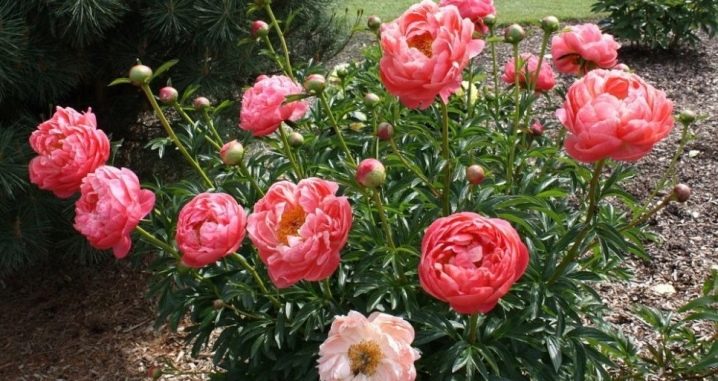
Subtleties of reproduction
Every gardener wants to have more of these beautiful plants in his garden, so they think about their reproduction. There is only one way to do this - to divide the root system of the peony into several seedlings.
You can do this within 3-4 years after the mother bush has been planted. During this time, it will grow 6-7 stems. In order to separate them, the bush must first be dug up. Then you need to remove all the soil from the roots and rinse with water. Then the bush must be placed in a cool place for several hours. This should be done so that the roots become softer and easier to separate.
Next, you need to cut it into several seedlings with a very sharp knife. Places of cuts must be treated with garden varnish or charcoal. Each of them should have several buds, as well as lateral roots. After separation, the seedlings can be planted in the prepared place. This procedure is done in late summer or early autumn.

Growing features
Growing peonies is not difficult at all, since they do not require special care. However, it is still necessary to follow some rules.
Seat selection and landing
It is best to place the plant in a sunny and open area. However, there should be no drafts, so it is best to plant it next to low bushes. In addition, the hole must be dug in advance, 10-14 days before planting. It should be 70 centimeters deep and wide. At the very bottom, you need to put a drainage layer up to 20 centimeters. It can be gravel, crushed brick, and perlite. Then put a mixture of sand, deciduous humus, and peat on top. They must be taken in equal proportions. The layer should not exceed 25 centimeters.
Further, everything is supplemented to half of the pit with ordinary garden soil and left for two weeks.
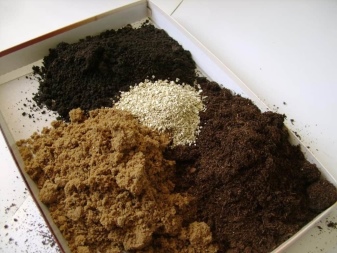
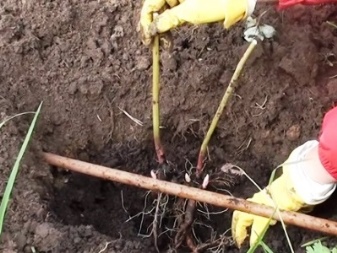
After this time, you can start planting peonies. The bush must be placed on well-established ground. Then you need to carefully straighten all the roots so that they are evenly spaced. From above it is necessary to sprinkle everything with an ordinary substrate and carefully tamp the surface. It is also necessary to ensure that the kidneys are not too deep. After that, the ground must be watered abundantly with either water or a manganese solution.
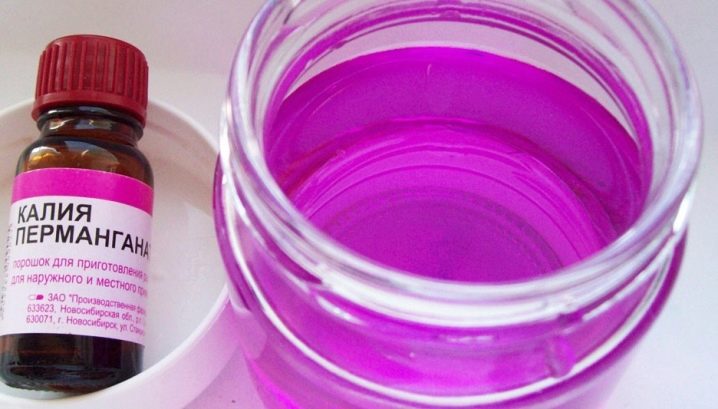
You can put a small layer of mulch on top, which will allow you to retain moisture longer. In addition, in this case, a huge amount of weeds will not grow. Both spruce branches and ordinary compost can be used as mulch.
Care
Within 2 weeks after planting, you need to water the bush daily, after which watering is done as needed. In cool weather, water it once every 2 weeks, and on hot days you can do it every day. Fertilizers must be applied several times a season. Peony will need both superphosphate and potassium.
Top dressing should be done in early March, just before flowering, and at the end of August.

After the peonies have faded, you can cut them off, or you can leave them on the bush. Some gardeners leave the buds after flowering to get seeds. However, when grown by seed, they may not retain all of their characteristics, which is especially typical for hybrid plants.
If the bush grows in one place for a long time, then its root system will not increase, therefore, after 7-8 years, it is imperative to transplant the peonies to another place.
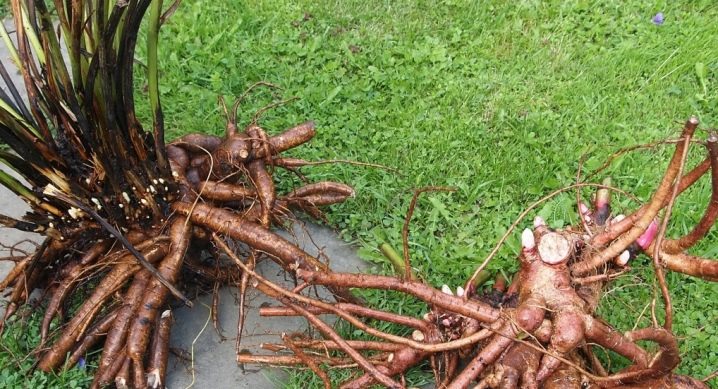
Diseases and pests
If we talk about diseases that are common among peonies, then the most dangerous the following are considered.
- Rot is gray. It manifests itself in the form of brown specks, which first appear only near the base of the stems, and then spread throughout the bush. In addition, small peony buds can also be affected. To get rid of this disease, you can cut off all the affected parts and burn them. At the same time, new ones do not grow. The bush must be treated with a solution of potassium permanganate, or use a more effective chemical, for example, Fundazol or Sumileks.
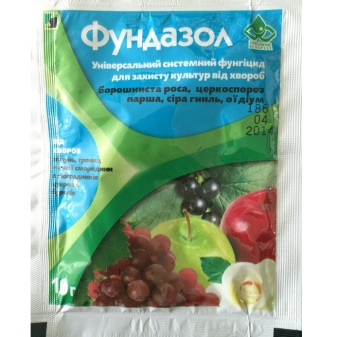

- Cladosporium... Most often, in this case, only the leaves of the peonies are affected. However, in some cases, this can affect the entire plant. The disease manifests itself in small dark spots. To combat it, you can use drugs that contain copper.
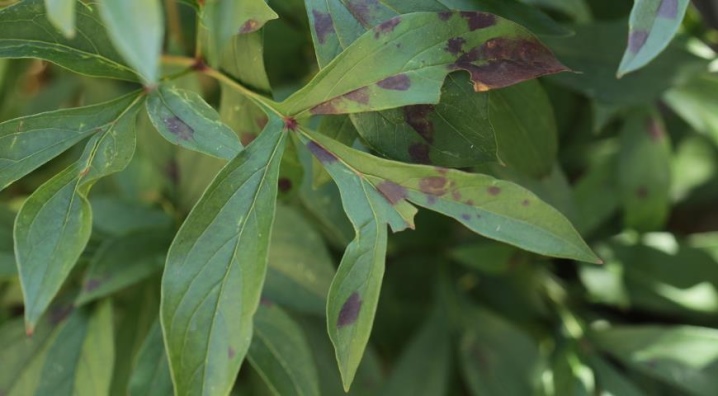
- Powdery mildew. It manifests itself most of all on adult plants with bloom on the upper leaves, after which they curl and wither. You can use in the fight against it and chemical preparations, for example, "Figon", and home - spraying the bush with soapy water.
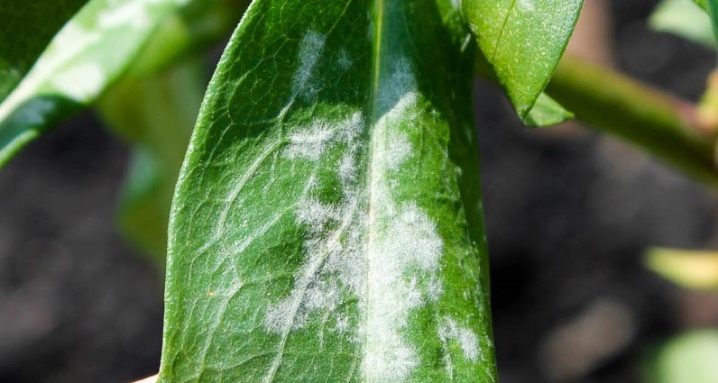
Among the pests, bronzes are considered the most dangerous, which eat not only the leaves of peonies, but also the petals of flowers. To get rid of them, you can simply collect them every morning.
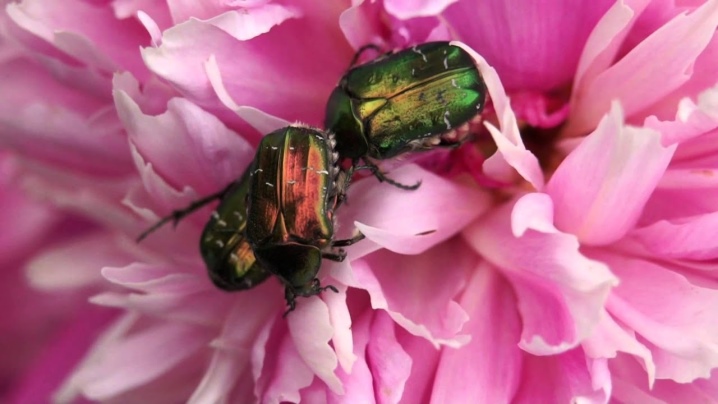
When aphids attack, which feeds on plant sap, you can use a soap solution to destroy it. Often peonies are attacked by sod ants, which often eat petals in pursuit of sweet syrup. To get rid of them, you can use such a folk remedy as an infusion of garlic or celandine, or treat the soil around the bush with an "Anteater" solution.

Gardeners reviews
Almost all gardeners note that it is very easy to care for peonies. In just a few years, the plant grows, after which it can be propagated and a new one can be planted nearby. And, of course, everyone praises its appearance and aroma. For many, it is the peony, not the rose, that is their favorite plant. So it is definitely worth planting for everyone who just wants to make the site beautiful and enjoy their luxurious and fragrant flower garden for the whole summer.
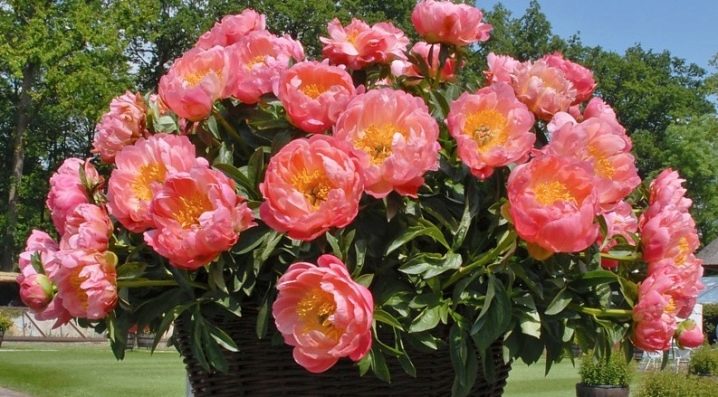
In the video below you can watch an overview of the rare "Coral Sunset" peony.







































































































Hello. Allow me to clarify about Coral 'n gold. At the beginning of flowering, it is coral, after a few days it begins to turn yellow and stands yellow for a couple of days, and then turns white. Super performance!
The comment was sent successfully.